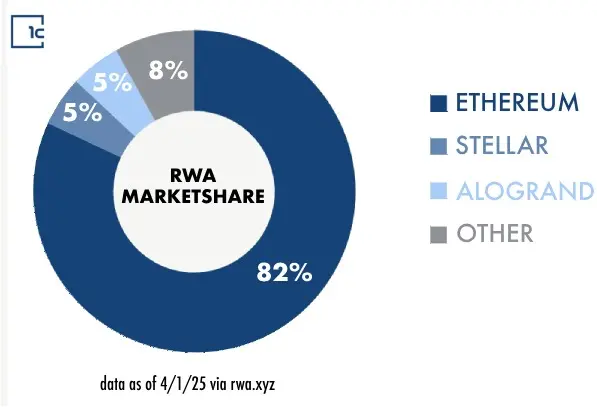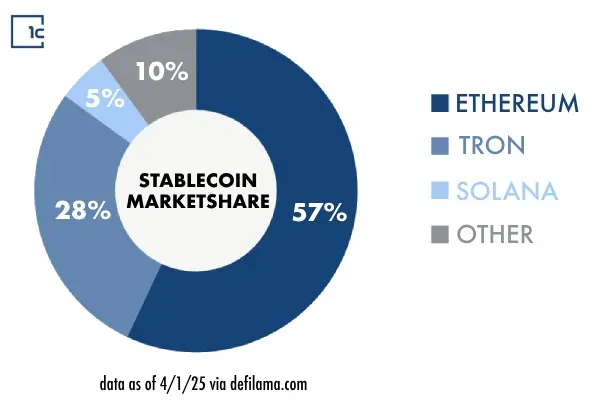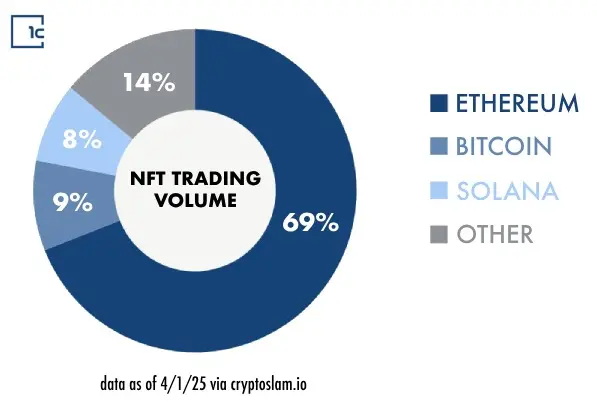Original Title: Money, Blockchains and Social Scalability v2
Author: Nick Tomaino, Founder and General Partner of 1confirmation
Translation: Hailsman, ChainCatcher
Social scalability refers to a system's ability to allow more people to participate and achieve a win-win situation. This is also a major reason why the cryptocurrency market has become a $2.9 trillion asset class today. In this article, I will explain what it is and why it matters.
In 2017, cryptography expert Nick Szabo published an article titled “Money, Blockchains and Social Scalability” that described Bitcoin as a social breakthrough, which has now become a must-read article. Most people view cryptocurrencies purely as technology and focus on technical scalability. However, I agree with Szabo that while technical scalability does play a role in social scalability, it is not the main factor. The biggest winners will be those cryptocurrencies that achieve social scalability through the most credible neutrality and provide the greatest utility.
Social Scalability of Bitcoin
Bitcoin is the first credible neutral, internet-native store of value that is useful to people in the United States, China, Russia, Brazil, and hundreds of other countries around the world. By "credible neutrality," I mean fairness, impartiality, and not being influenced by a minority. Credible neutrality is a social construct that is often rooted in technology but ultimately based on various dynamic factors that influence human trust.
Credible neutrality is something that protocols gain over time, but it is initiated by humans at the beginning. Bitcoin was launched as open-source software, allowing anyone to read, run, write, and own it in a fair competitive environment. Its launch was fair. There were no private transactions, nor was it tied to celebrities, companies, or countries. The rules were clearly established from the start and have not been changed. The community openly discusses everything on forums like Bitcoin talk. To understand its spirit, one can read early articles by Hal Finney.
The credible neutrality and utility of Bitcoin are the main reasons for the development of the crypto industry to date. Initially, it was a grassroots movement initiated by the pseudonymous founder Satoshi Nakamoto, not belonging to any individual or subject to any jurisdiction, providing a new product that anyone in the world could use. Today, it has grown into a $1.7 trillion asset, with some of the largest governments and companies in the world actively using it as a store of value. The rules of the Bitcoin system remain difficult to change, which is one of the important reasons for its continued adoption.
The growth of Bitcoin is remarkable, but the cultural decisions made by the community early on—focusing solely on currency—have limited the development of new Bitcoin developers and companies to use it for more than just currency. Despite extremists emphasizing Bitcoin's orthodoxy for the past 15 years, decentralized systems still have enormous opportunities to bring more freedom and progress to the world beyond currency.
Is Social Scalability Really Important?
Social scalability is an important factor in Bitcoin's success, but by 2025, the importance of social scalability may be questioned. Today, among the top 9 cryptocurrencies by market capitalization, 4 are actually company coins (XRP, BNB, SOL, TRON). The total market capitalization of these 4 coins exceeds $31.2 billion.
These tokens have strong narratives but have not yet achieved credible neutrality. Small teams launched these tokens from well-known jurisdictions (Silicon Valley, the U.S., and China) and allocated over 50% of the tokens to insiders (founding teams and/or venture capital firms). They have highly coordinated marketing campaigns, with insiders involved in government lobbying and engaging in a lot of corporate-style top-down activities. These protocols have yet to prove resilient, secure, and resistant to single points of failure. They have made radical trade-offs for performance at the expense of decentralization.
We can discuss their utility—some might argue that these 4 protocols are useful, but they have not enabled new use cases or broader adoption. In any case, the approach taken by these 4 protocols has been very effective. It can also be said that they have been successful in capturing value, and this has little to do with so-called social scalability.
But in the long run, social scalability is very important and will bring $20 trillion in value growth over the next decade. This is why we insist on being here. Time will tell the truth, and things will change. If you indeed agree that social scalability is crucial and look at the facts, it is clear that only two cryptocurrencies have both credible neutrality and the utility to achieve long-term social scalability: BTC and ETH.
BTC holds the throne, but ETH may also prove to be more socially scalable than BTC. Here’s why:
Credible Neutrality of ETH
Similar to Bitcoin, Ethereum's credible neutrality has existed from the beginning. Although Ethereum does not have the "fair issuance" of Bitcoin, only 9.9% of the supply was allocated to insiders, and anyone in the world could easily own ETH by sending BTC to the ICO address. There were no insider trades with venture capital, nor were there celebrities, companies, or countries involved.
Ethereum also started as a proof-of-work (PoW) chain and maintained PoW for the first 7 years to ensure a more balanced distribution before transitioning to proof-of-stake (PoS). You did not need to own or buy ETH to participate in consensus and earn rewards at the beginning; you just needed to contribute computational resources. Early token holders of the native PoS chain dominated token rewards, and the transition from PoW to PoS is unique and underrated. It helped Ethereum engage a large and diverse set of stakeholders early on and allowed a broader audience to participate in consensus and earn ETH rewards today.
The founder of Ethereum is Vitalik Buterin. Some critics may question Vitalik's leadership and argue that the fact that a known founder holds significant power undermines credible neutrality. However, in reality, Vitalik's leadership style is transparent and genuine; he has laid the cultural foundation of Ethereum by emphasizing credible neutrality.
You won't see Vitalik peddling investment narratives and chasing money, attention, and power like many major figures in the crypto space. For over a decade, he has been one of the most capable people in the industry to operate this way, but he has refused to do so. Instead, he does things his way, emphasizing values such as resisting censorship, inclusivity, and transparency, primarily focusing on setting the best technical architecture and values for builders in the long term.
In fact, the governance of Bitcoin and Ethereum is the same. Changes to the protocol require rough consensus among miners, users, and developers, so Ethereum's pace of change is much slower than many VC-type expectations. But in the long run, this helps achieve more reliable neutrality, which is a conscious trade-off made by Ethereum's leadership.
The Ethereum mainnet currently has 4 execution clients (Geth, Nethermind, Besu, and Erigon) and 5 consensus clients (Prysm, Lighthouse, Teku, Nimbus, and Lodestar) actively maintained. Client diversity and avoiding single points of failure have always been a focus. Additionally, the mainnet and L2 EVM environments have become the most trusted development environments for developers and companies.
Today, the BTC supply owned by Michael Saylor's entity is much larger than the ETH supply owned by Vitalik and the Ethereum Foundation. Bitcoin leaders have allied with governments more quickly by supporting politicians and lobbying. This may be a result of Bitcoin advancing further than Ethereum and attracting a broader range of stakeholders, which may seem to benefit Bitcoin.
However, the risk that Michael Saylor and government lobbying undermine credible neutrality is real, in contrast to Vitalik and the Ethereum Foundation resisting the impulse to react to the market environment by chasing investment narratives. Ethereum's leadership focuses on builders, and Ethereum is now much larger than any individual or group. The most important people for Ethereum's future may be these quiet builders.
Utility of Ethereum

Since Bitcoin introduced the world to a credible neutral, internet-native store of value, Ethereum has dominated developer attention and is the source of every major new crypto use case that goes beyond currency, significantly bringing newcomers into the crypto space. Ethereum is home to specific use cases such as decentralized finance (DeFi), non-fungible tokens (NFTs), prediction markets, decentralized social networks, decentralized identity, real-world assets (RWA), and stablecoins. All these new use cases provide Ethereum's credible neutrality and store of value characteristics through the distribution of EVM wallets and ETH.
Some of these use cases started on the Ethereum mainnet and are now gradually transitioning to L2 chains built on Ethereum. Developers prefer a trusted developer environment that offers them more control and better economic benefits than L1, which is precisely what Ethereum's L2 architecture provides. Developers building on L2 or L3 not only gain more engagement but also enjoy Ethereum's security, the network effects of EVM, and expand the consensus of ETH as a credible neutral, internet-native store of value. Meanwhile, some use case developers may prefer to stay on the mainnet, as the liquidity advantages of the mainnet cannot be provided by L2. Both outcomes are beneficial for ETH.
There has been much debate about whether L2 adds value to ETH or harms ETH's value by eating into mainnet fees. Standard Chartered recently lowered its price target for ETH from $10,000 to $4,000 based on the argument that Coinbase's L2 Base is eating into mainnet fees. This perspective overlooks the bigger picture.
The main benefit of L2 is not contributing fees to the mainnet but expanding the consensus of Ethereum as a credible neutral, internet-native store of value through the distribution of EVM wallets and ETH. The supply of ETH can decrease based on the usage of the Ethereum ecosystem (including the mainnet and L2), which has made ETH more deflationary than BTC, a nice feature. But fees are not the main advantage of applications and L2.



Ethereum Dominates Stablecoin, RWA, and NFT Use Cases
Ethereum is now the primary ecosystem for new developers and large companies (such as JPMorgan, BlackRock, Coinbase, Robinhood, etc.) to tokenize assets. Its ecosystem, driven by crypto-native assets like NFTs and tokens, is increasingly expanding into areas such as dollars, government bonds, stocks, bonds, private credit, and real estate. Whether these activities occur on the mainnet or L2, and how much L2 ultimately pays in fees to the mainnet, will affect the scale of ETH destruction. However, even if all these activities take place on L2 and L2 pays very little in fees to the mainnet, the adoption of these use cases will still expand the consensus of ETH as a credible neutral, internet-native store of value.
Opportunities Exceeding $100 Trillion
Credible neutral, internet-native stores of value represent the largest market opportunity in the world today. The total market capitalization of gold is about $20 trillion, and the global M2 (broad money supply) is around $100 trillion, so it can be said that this is a market opportunity exceeding $100 trillion.
Cryptocurrencies that achieve social scalability through credible neutrality and utility are best positioned to seize this opportunity. Currently, the narrative surrounding this is not strong, but what I have learned in life and in the crypto space is that often the stronger the narrative, the further it is from the truth (and vice versa). Those who remain focused and are not tempted by chasing trends will be rewarded.
免责声明:本文章仅代表作者个人观点,不代表本平台的立场和观点。本文章仅供信息分享,不构成对任何人的任何投资建议。用户与作者之间的任何争议,与本平台无关。如网页中刊载的文章或图片涉及侵权,请提供相关的权利证明和身份证明发送邮件到support@aicoin.com,本平台相关工作人员将会进行核查。




